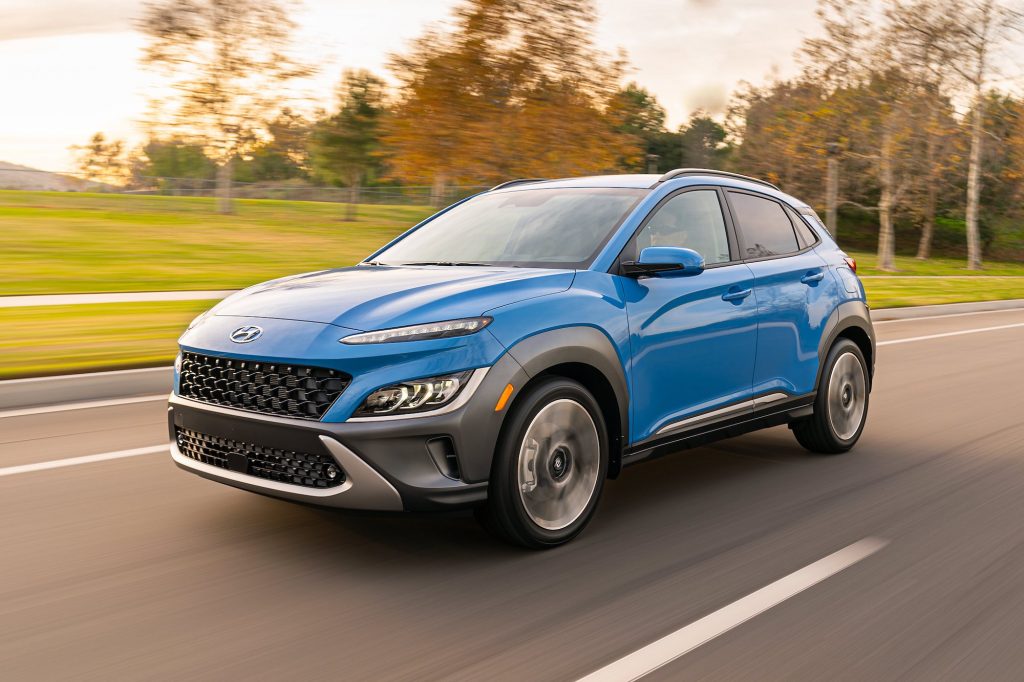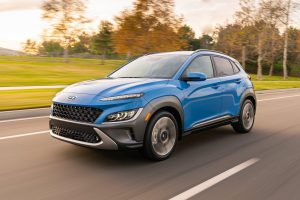Specifications of different versions of the new generation of Hyundai Kona


The big Hyundai company plans to launch the new generation of Kona cars as 2024 models. This car has a very attractive appearance and is equipped with gasoline, hybrid and all-electric engines. Kenna is placed in the category of small crossovers, and its previous generation has been warmly welcomed by global markets. For this reason, Hyundai is counting on the high sales of new models. In the following, we will get to know the most important specifications of different versions of Kenna.
The new generation of Hyundai Kona is offered in four different models and has a larger size than the previous model, and its length, width and height are 4350, 1825 and 1580 mm, respectively. The distance between the axles of the wheels reaches 2.66 meters; Therefore, the cabin provides passengers with a spacious space and ensures their comfort during short and long trips.
The appearance of this car looks very futuristic thanks to the narrow LED strip that covers the entire edge of the hood. The main lights of the car are embedded in the corners of the bumper. The lower part of the nose and the side view distinguish different versions of the Kenna from each other.
The regular petrol version has a black rectangular opening, and the N-Line version has a trapezoidal opening. The electric version does not need an air intake and its closed grille includes pixel elements. By observing the side view of the cars, they can be distinguished from each other. In internal combustion and hybrid versions, the fenders have a black plastic cover, but the electric version and N-Line lack this feature and the fenders are the same color as the body.
A narrow light strip is also used in the rear part of the car to create a good harmony with the front view. The Hyundai logo with Latin letters can be seen under the LED strip. The rear lights are small in the corners of the bumper.
It should be noted that the N-Line version, as a sport type, includes other appearance features such as black roof, pillars and side mirrors, prominent spoiler, silver side sills and two circular exhaust outlets next to each other.
As soon as you enter the Kona cabin, the footprint of technology and modernity is well felt. A large screen is stretched from the middle of the dashboard to the back of the steering wheel, which is actually a combination of two separate 12.3-inch screens. The right part is a part of the infotainment system that can be updated remotely. This system is also expected to support Apple CarPlay and Android Auto wireless technologies. But the display installed in front of the driver shows the vital information of the car. The three-pronged circular steering wheel with chrome decorations and control buttons, leather seats and ambient lighting system are other features of the cabin. The air conditioning control system and its vents are embedded under the screens.
As mentioned earlier, the new Kena is bigger than the previous model and the distance between its axles is about 6 cm longer. Thanks to this 6 cm and narrower front seats, 77 mm more legroom and 11 mm more headroom as well as better shoulder space have been provided to the rear row passengers.
Now it’s time to check the attractive part of each car, i.e. its engine. Two different types of gasoline engines have been offered for the Kenna, which have been inherited from the previous generation. The 2-liter model is naturally aspirated and can produce 147 horsepower and 180 Nm of torque. Instead, the 1.6-liter engine uses turbocharging technology and is capable of producing 195 horsepower and 265 Nm of torque. Both engines are connected to a CVT transmission that sends power to the front wheels.
With a 2-liter engine, the Kona can reach 100 km/h from a standstill in 9.2 seconds. Acceleration from 0 to 100 is about 7.3 seconds if the 1.6-liter turbocharged engine is used.
The hybrid version also includes a naturally aspirated 1.6-liter engine with GDI technology, as well as an electric drive that produces a total of 140 horsepower and 265 Nm of torque. The specifications of the electric motor are not yet known.
In terms of facilities and safety equipment, it should be said that all Kenna 2024 models are equipped with driver assistance features. Some of these features, such as emergency braking and blind spot camera, are now common equipment among cars. However, it is likely that Hyundai will use the driving monitoring system as well as the automatic parking function in its future models. The most important safety features in all four Kona models include automatic emergency braking system, lane departure warning system along with lane keeping assistant and adaptive cruise control.
Hyundai is known as one of the most forgiving car manufacturers with a 10-year engine warranty. However, due to competition with Toyota company, Hyundai has considered a new warranty program for Kenna. This program includes a 5-year limited warranty equivalent to 60,000 miles, a 10-year engine warranty equivalent to 100,000 miles, and a 3-year free maintenance warranty equivalent to 36,000 miles.

